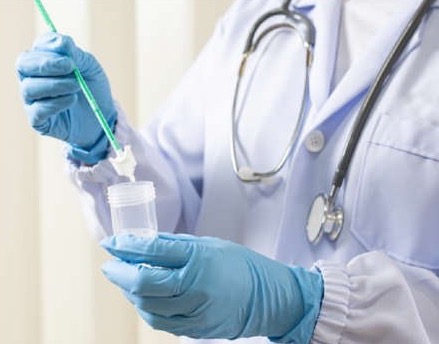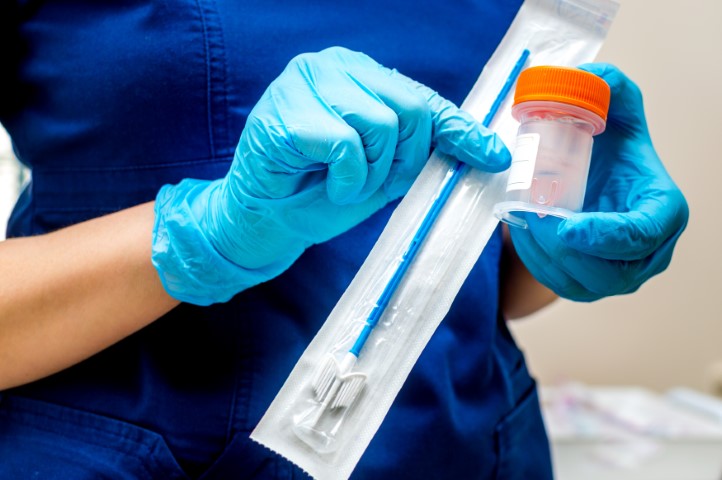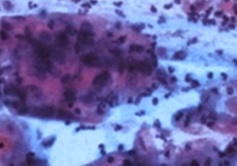

Tartaczna 2
Discover the quality of healthcare in the style of Tartaczna2!


Liquid Based Cytology - LBC is a new standard in gynaecological diagnostics. It shows much higher sensitivity and accuracy and, consequently, greater reliability of cytology results.
Conventional cytology has a sensitivity of about 60%. This means that as many as 4 out of 10 performed examinations may be false negative or false positive. With a recommendation to perform the test every 3 years, this lack of precision can be dangerous to patient’s health.
LBC is a method that we exclusively recommend and use at Tartaczna 2 Medical Centre. It complies with the latest international (American and European) standards and recommendations of the Polish Society of Gynaecologists and Obstetricians.
Cytology is the most effective method of detecting alarming cervical lesions. When performed regularly, it gives a patient 100% control over her health. Early stages of cervical dysplasia are completely curable. The most important thing is regular diagnostics!
Cytology is a preventive screening test. It involves inserting a speculum into patient’s vagina and using a special brush to collect cells from the ectocervix and endocervix. The collected material is examined under the microscope to verify the normal cell structure.
Cytology is also used to detect other abnormalities, such as erosions, inflammation or HPV infection (which is responsible for around 70% of all cases of cervical cancer).

In conventional cytology, the collected material (a cervical swab) is spread on a cytology slide and transferred to a laboratory for microscopic evaluation.
Liquid Based Cytology swabs are collected in a very similar way, but it involves using a completely different brush and a specimen is protected together with the brush in a special fixative liquid (transport medium). The whole swab is transported to the laboratory, filtered and then transferred onto a microscope slide.
This significantly increases the amount of material that can be analysed. The solution protects the specimen from damage from the moment of collection to reception at the laboratory.
This is the advantage and main benefit that makes LBC so accurate and reliable compared to the conventional method.


According to the latest international standards, every woman should be diagnosed for HPV with determination of its oncogenic types. Detection of HPV enables more frequent control of the cervix and appropriate prevention in case of infection, even if it does not cause any symptoms.
HPV is the Human Papillomavirus. It comes in almost 200 different types, which are classified into low-oncogenic and high-oncogenic risk types. High-oncogenic risk types play a key role in the incidence and development of cervical cancer. HPV leads to cervical lntraepithelial neoplasia (CIN) and is detected in about 90% of abnormal cells.
Low-oncogenic risk types include: 1, 2, 6, 11, 13, 30, 40, 42, 43, 44.
High-oncogenic risk types include: 16, 18, 31, 33, 35, 39, 45, 51, 52, 56, 58, 59, 66, 68, 73.
The most prevalent oncogenic HPV type is 16 (about 60% of all cervical cancer cases) and 18 (about 25% of all cervical cancer cases)
Improved quality of the specimen, which increases accuracy and efficiency of the test.
Increased number of evaluated cells.
Safety of the collected swab and minimisation of damage during transport.
Possibility to eliminate undesirable cells from the examined specimen: blood, mucus, bacteria.
Reduced number of incorrectly collected swabs.
Testing for HPV from the same sample.
Possibility of performing other diagnostic tests from the same sample (CINtec PLUS, chlamydia, gonorrhoea).
Extension of cytology intervals up to 5 years (LBC + HPV) in certain age groups.
Liquid Based Cytology guarantees twice as high detection rate of abnormal intraepithelial lesions compared to the conventional method.
It detects even the smallest lesions in cell structure, which may be overlooked in conventional cytology. Thanks to that, physicians may detect abnormalities at the earliest stage and apply the least invasive and most effective treatment methods.

Each woman should be screened with cervical cytology at the age of 21 or after becoming sexually active. It is assumed that the safe interval between the smears is about 3 years, but in practice it is very individual. After receiving results, a physician determines the patient's condition and, on this basis, recommends an appropriate date for the next test.
Every woman should be screened with cervical cytology at the beginning of pregnancy (cytology may not be necessary if it was performed up to 6 months before pregnancy), as well as at the postmenopausal period. In each case, screening intervals should be decided individually by a physician.
You should be screened with cervical cytology more frequently (according to individual recommendations) if:
your previous cytology result was abnormal
you have been diagnosed with HPV infection
you frequently suffer from infections of intimate areas

Cytology is a non-invasive and painless procedure. When preparing for it, you should follow a few simple rules to be sure that the result will be accurate.
Come for the test:
The test can be performed at a gynaecological appointment or at the midwife's office.
The cost of the test depends on how many and what additional tests are ordered together with the cytology; the price includes smear collection plus evaluation and recommendations of the gynaecologist after receiving the result.